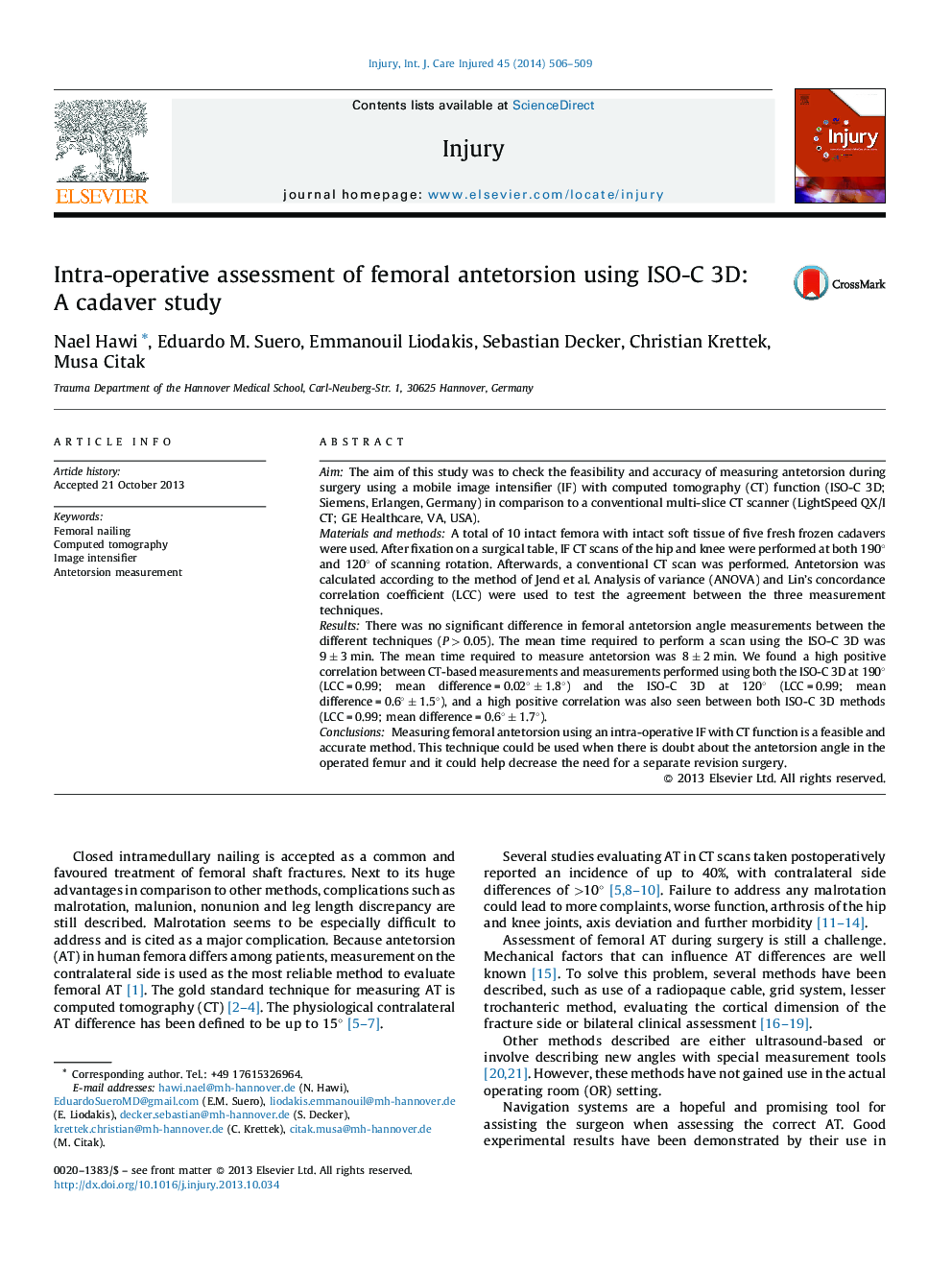| Article ID | Journal | Published Year | Pages | File Type |
|---|---|---|---|---|
| 6083482 | Injury | 2014 | 4 Pages |
AimThe aim of this study was to check the feasibility and accuracy of measuring antetorsion during surgery using a mobile image intensifier (IF) with computed tomography (CT) function (ISO-C 3D; Siemens, Erlangen, Germany) in comparison to a conventional multi-slice CT scanner (LightSpeed QX/I CT; GE Healthcare, VA, USA).Materials and methodsA total of 10 intact femora with intact soft tissue of five fresh frozen cadavers were used. After fixation on a surgical table, IF CT scans of the hip and knee were performed at both 190° and 120° of scanning rotation. Afterwards, a conventional CT scan was performed. Antetorsion was calculated according to the method of Jend et al. Analysis of variance (ANOVA) and Lin's concordance correlation coefficient (LCC) were used to test the agreement between the three measurement techniques.ResultsThere was no significant difference in femoral antetorsion angle measurements between the different techniques (P > 0.05). The mean time required to perform a scan using the ISO-C 3D was 9 ± 3 min. The mean time required to measure antetorsion was 8 ± 2 min. We found a high positive correlation between CT-based measurements and measurements performed using both the ISO-C 3D at 190° (LCC = 0.99; mean difference = 0.02° ± 1.8°) and the ISO-C 3D at 120° (LCC = 0.99; mean difference = 0.6° ± 1.5°), and a high positive correlation was also seen between both ISO-C 3D methods (LCC = 0.99; mean difference = 0.6° ± 1.7°).ConclusionsMeasuring femoral antetorsion using an intra-operative IF with CT function is a feasible and accurate method. This technique could be used when there is doubt about the antetorsion angle in the operated femur and it could help decrease the need for a separate revision surgery.
